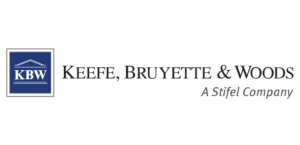Insurer loses appeal of a $45K punitive damages award

Jeweler’s Mutual Insurance Company has lost its appeal of a $45,000 punitive damages award because two Ontario courts found the insurer had wrongly questioned the pre-policy ownership of jewellery stolen while the claimants were travelling overseas.
“It was open to the trial judge to find that Jeweler’s Mutual had accepted that the [claimants] owned the jewellery when it issued the policy and that Jeweler’s Mutual acted in bad faith by investigating the claim, refusing to pay, and defending the action through trial, on the basis that the [claimants’] pre-policy ownership of the jewellery remained in question,” the Ontario Court of Appeal ruled in a decision released Oct. 7.
The case speaks to insurers’ reliance on the attestation of property ownership when insureds make online applications for insurance.
The background
In August 2014, Jeweler’s Mutual Insurance Company issued an insurance policy to Dung Truong and Thuan Nguyen. The policy insured six pieces of jewellery against various risks, including theft. Based on appraisals submitted by the insureds at the time of application, the policy valued the jewelry at $502,100.
After arriving in Vietnam, Nguyen carried the jewellery in her purse. On the evening of Mar. 7, 2015, when she and her husband Truong were walking along a street in Can Tho City, two people on a motorcycle snatched Nguyen’s purse and sped off.
After returning to Canada, Truong and Nguyen submitted a proof of loss on Jeweler’s Mutual’s prescribed form. They claimed $502,100 and described when the theft occurred.
In investigating the claim, Jewelers’ adjuster could not find evidence of a receipt for the lost property. This is because the jewelry was obtained indirectly, as gifts, as the courts noted.
“The [claimants] had acquired the jewellery in ways not conducive to easy proof of ownership,” the Ontario Court of Appeal commented in a decision released on Oct. 7. “Two of the rings were gifts from Mr. Truong’s mother when he and Ms. Nguyen got married in 1997. They purchased the other pieces from jewellery shops in Toronto through a combination of cash and trading-in of other pieces of jewellery. They did not pay HST on or obtain a receipt from these transactions.”
Because of the tax implications of obtaining jewelry through cash and not paying HST, the court observed, it was unlikely the claimants were going to be able to provide receipts of ownership.
Jewelers denied the claim, and Truong and Nguyen launched an action against the insurer.
Also in the news: Which region saw sharpest auto theft increase?
What the lower court said
The online insurance policy application form required Truong and Nguyen to acknowledge the application was for an “insurance policy to repair or replace my jewellery [emphasis added],” and acknowledge the “fraud warning” that appeared as part of the application form.
The fraud warning stated the policy would be void if the property was falsely described to the prejudice of the insurer, or if any information that was material to the risk to be undertaken was misrepresented or fraudulently omitted.
“Jeweler’s Mutual did not request evidence of ownership or insurable interest apart from the [claimants’] attestation in the online application,” the Ontario Court of Appeal states. “It issued the policy in August 2014 without making any further inquiry of [Nguyen or Truong].”
The trial judge found in favour of Truong and Nguyen and awarded them $502,100. He also awarded an additional $45,000 as punitive damages.
“He was of the view that the [claimants] never should have been put to the proof of their pre-policy ownership of the jewellery because Jeweler’s Mutual accepted the [claimants’] ownership when it issued the policy – a policy it admitted had not been the result of any material misrepresentation,” as the Appeal Court characterized the trial judge’s decision.
“By not paying, and defending, on the basis that once there was a loss the [claimants] had to prove pre-policy ownership, Jeweler’s Mutual attempted to impose an obligation on the [claimants] that would not have been reasonably expected by an insured, and arrogated unto itself an un-bargained for right, in bad faith.”
The appeal
Jewelers appealed the $45,000 punitive damages award to the Court of Appeal.
Although the insurer never claimed the couple owning the jewellery made a fraudulent application for their insurance policy, Jewelers argued it had a basis for asking about pre-policy ownership because a proof of loss provision in the policy called for an inventory of the lost property, along with “copies of all bills, receipts, and related documents that substantiate the inventory.”
It claimed this policy provision made it justifiable to deny the claim, and that it had not acted in bad faith. The courts agreed bad faith claims aren’t automatic: It isn’t bad faith, for example, simply to deny a claim and then have that decision reversed by a court. Bad faith arises based on the specific circumstances in which the claims investigation is conducted.
But in this case, the Court of Appeal confirmed the punitive damages award.
“Before litigation, Jeweler’s Mutual responded to the claim by questioning the [claimants], and requiring them to point out where they purchased the jewellery and to provide substantiation,” the Court of Appeal ruled. “Its defence through to the end of trial challenged the [claimants’] honesty about whether they ever owned the jewellery. I agree with [Truong and Nguyen] that Jeweler’s Mutual, while not directly alleging misrepresentation, implicitly suggested that [they] had sought to insure and claim for jewellery they never owned, an assertion which is suggestive of fraud.”
The court went on to note the use of the term “my” in the online policy application, suggesting the policyholder was claiming ownership of the valuables for which they obtained coverage.
Feature image courtesy of iStock.com/AdrianHillman


